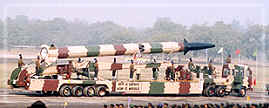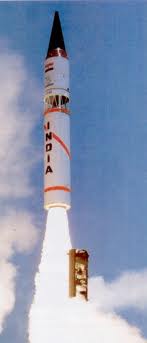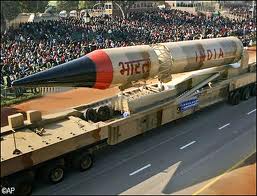INDIA
DEFENCE CONSULTANTS
|
WHAT'S
HOT? –– ANALYSIS OF RECENT HAPPENINGS |
||||||||||||||||||||||||||||||||||||||||||||||||||||||||||||||||||||
|
AGNI SERIES OF GUIDED MISSILES An IDC Report |
||||||||||||||||||||||||||||||||||||||||||||||||||||||||||||||||||||
|
New Delhi, 31 January 2012
Agni 5 (to be tested in Feb) The Agni series of missies are being developed as part of the Integrated Guided Missile Development Programme (IGMDP) for the development of a comprehensive range of missiles, including the intermediate range Agni missile (Surface to Surface), and short range missiles such as the Prithvi ballistic missile (Surface to Surface), Akash missile (Surface to Air), Astra missile (Air to Air), Trishul missile (Surface to Air) and Nag Missile (Anti Tank). The program was managed by the Defense Research and Development Organization (DRDO) in partnership with other Indian government labs and research centres. One of the most prominent chief engineers on the project, Dr. Abdul Kalam went on to become the President of India. The project was started in early 1980s and resulted in the development of several key strategic missiles. The last major missile developed under the program was Agni 3 intermediate-range ballistic missile which was successfully tested on 9 July 2007. On 8 January 2008, and after the third test of Agni-3 on 7 May 2008, the DRDO announced that it will be closing the IGMDP program formally since most of the missiles in the program have been developed and inducted into Indian armed forces. According to a statement by Dr. S Prahlada, a DRDO Director, new missile and weapons systems will be developed in new five-year programs and include both Indian private industries as well as foreign partners to lower costs. DRDO has independently continued further development work on Nag and Surya missile. In addition, the DRDO is also developing a laser-based weapon system as part of its ballistic missile defense program to intercept and destroy missiles soon after they are launched towards the country. In 2008, India noted that the strategic integrated guided missile program was completed with its design objectives achieved. Follow on strategic projects are being either pursued singly (e.g. Agni project) whereas tactical systems could involve joint ventures with even foreign partners. Missiles of Agni Series
Agni missile systemThe Agni missile is a family of Medium to Intercontinental range ballistic missiles developed by DRDO of India. The initial Technology demonstrator version had a range of 1500 km but were based on a solid and a liquid stage making for long preparation before firing. Learning from this the production variants of Agni are solid fuel based to allow for swift retaliation against adversaries. Indian government stated in its official press release that its nuclear and missile development programmes are not Pakistan-centric. That the Pakistani threat is only a marginal factor in New Delhi's security calculus and Agni is at the heart of deterrence in the larger context of Sino-Indian equation. Missiles of Agni series are developed by DRDO and manufactured by Bharat Dynamics Limited. Agni-IAgni-I, a single stage solid fueled missile of 700–900 km range, was the first missile of the Agni family. It is both rail and road mobile. Agni-I was tested at the Interim Test Range in Chandipur in 1989, and can carry a nuclear payload of 1,000 kg (2,200 lb). Agni-IIAgni-II a two and a half stage, solid fueled missile with a range of 2000–3000 km, was tested on 11 April 1999 from a converted rail carriage. Being rail and road mobile significantly reduces it vulnerability to first strike. Later versions of Agni-II feature a maneuvering re-entry vehicle and increased accuracy flex nozzle in second stage which enables alterations in the thrust vector direction. Agni-II can carry a nuclear payload of 1000 kg. Agni-IIIAgni-III is the third in the Agni series of missiles with an two stage solid propulsion and a striking range of 3500–5000 km. Agni-III was tested for the first time on July 9, 2006 and was Inducted in June 2011. It has a low CEP of 40m making it most sophisticated and accurate missile in its range class.it is better than agni 4 Agni-III reportedly carries ABM countermeasures such as decoys and maneuvering warhead. Agni-IVAgni-IV is the fourth in the Agni series of missiles. Agni-IV was tested on November 15, 2011 from Wheeler island off the coast of the eastern state of Orissa. Agni-IV has a range of 3,000 km, and can take a warhead of 1 tonnes. Its a two-stage missile powered by solid propellant. Its length is 20 meters and launch weight 17 tonnes. Agni-VA new missile Agni-V with 5,000 km range and MIRV is being developed and is scheduled to be tested "before December 2011". Agni-V shares the similar design as Agni-III with an extra stage added to further increase the range by 1500 km.[22] Agni-V will be road mobile and it has been stated that all Indians missile developed after this will be road mobile as well. Sources: Wikipedia & DRDO |
||||||||||||||||||||||||||||||||||||||||||||||||||||||||||||||||||||


